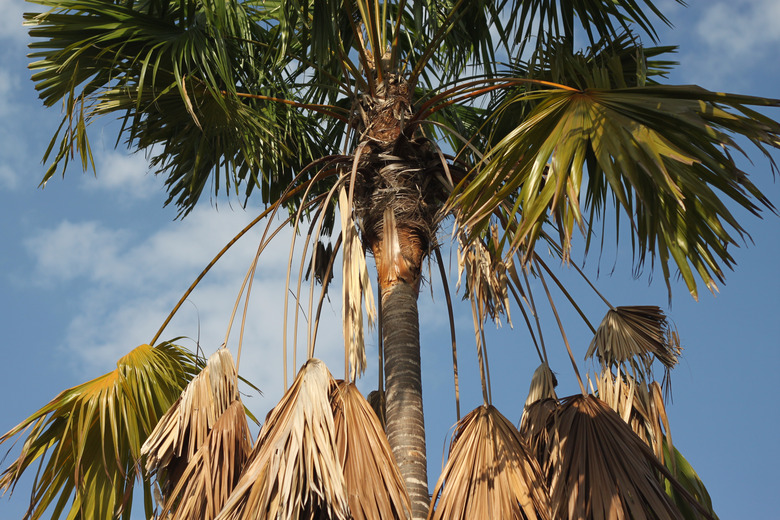How To Prevent Your Palm Plant From Drying Up And Dying
We may receive a commission on purchases made from links.
Growing a palm plant successfully means you have to provide it with a "tropical" environment. If your palm plant is drying out and dying, several issues could be in play, including cool temperatures, inadequate or excessive sunlight, too much or too little water, or infestation by pests. If you catch the grim situation in time, you may be able to return your palm plant to a healthy, vibrant form.
To revive your palm, it is important for you to first find out what kind of palm plant you have, as some types require distinctive growing conditions. For example, the curly sentry palm (Howea belmoreana, USDA zones 9-11) requires a cooler temperature compared to other feather palm plants, and the areca palm (Dypsis lutescens, zones 10-11) benefits from having some water sitting in its saucer, if grown as a potted plant.
1. Remove Yellow and Brown Fronds
1. Remove Yellow and Brown Fronds
Remove any dead or dried out, yellow to brown fronds from your palm plant. During your pruning sessions, be careful not to tug so hard that you damage the plant's trunk.
2. Protect Palms From Cool Air
2. Protect Palms From Cool Air
Move your indoor palm plant away from any source of cool drafts, such as an open window or cool air leaks coming through the wall. Sudden cool drafts may cause palm plant fronds to turn brown and die.
3. Keep Tabs on the Temperature
3. Keep Tabs on the Temperature
Monitor the temperature of the room to ensure the proper climate for an indoor palm. Most feather fans prefer a nightly temperature between 62 and 65 degrees Fahrenheit and a daily temperature between 80 and 85 F. Fan palm plants can tolerate cooler temperatures with a nightly temperature between 50 and 55 F and a daily temperature between 65 and 70 F.
4. Water Your Plant Properly
4. Water Your Plant Properly
Water your palm correctly. Although palms generally need a lot of water, you should not water a palm unless the top 1/2 inch to 1 inch of soil is dry. After watering an indoor palm, allow the residual water to drain into the saucer and then dump the water. This will help prevent root rot and ultimately palm plant death.
5. Give It Enough Light
5. Give It Enough Light
Place your palm plant in a location where it can receive adequate levels of sunlight. If the frond tips are brown and appear to be burned, the palm is probably too close to a source of sunlight. If the fronds are yellow and drooping, the plant may need more sunlight. Generally palm plants prefer indirect or filtered sunlight.
6. Mist the Fronds Daily
6. Mist the Fronds Daily
Mist palm plant fronds daily using a spray bottle filled with water to provide a humid atmosphere. Low humidity is one reason your palm plant may be drying out.
7. Check for Insect Infestations
7. Check for Insect Infestations
Check for insect pests that may be attacking your palm plant and causing its fronds to turn yellow and drop. Look for spider mites, which look like miniature red, yellow or brown spiders; mealybugs, which look like small, white puffs; or scales that show up as little bumps. If you have an infestation, wash the fronds with warm, soapy water every second day and then rinse thoroughly with warm water.
